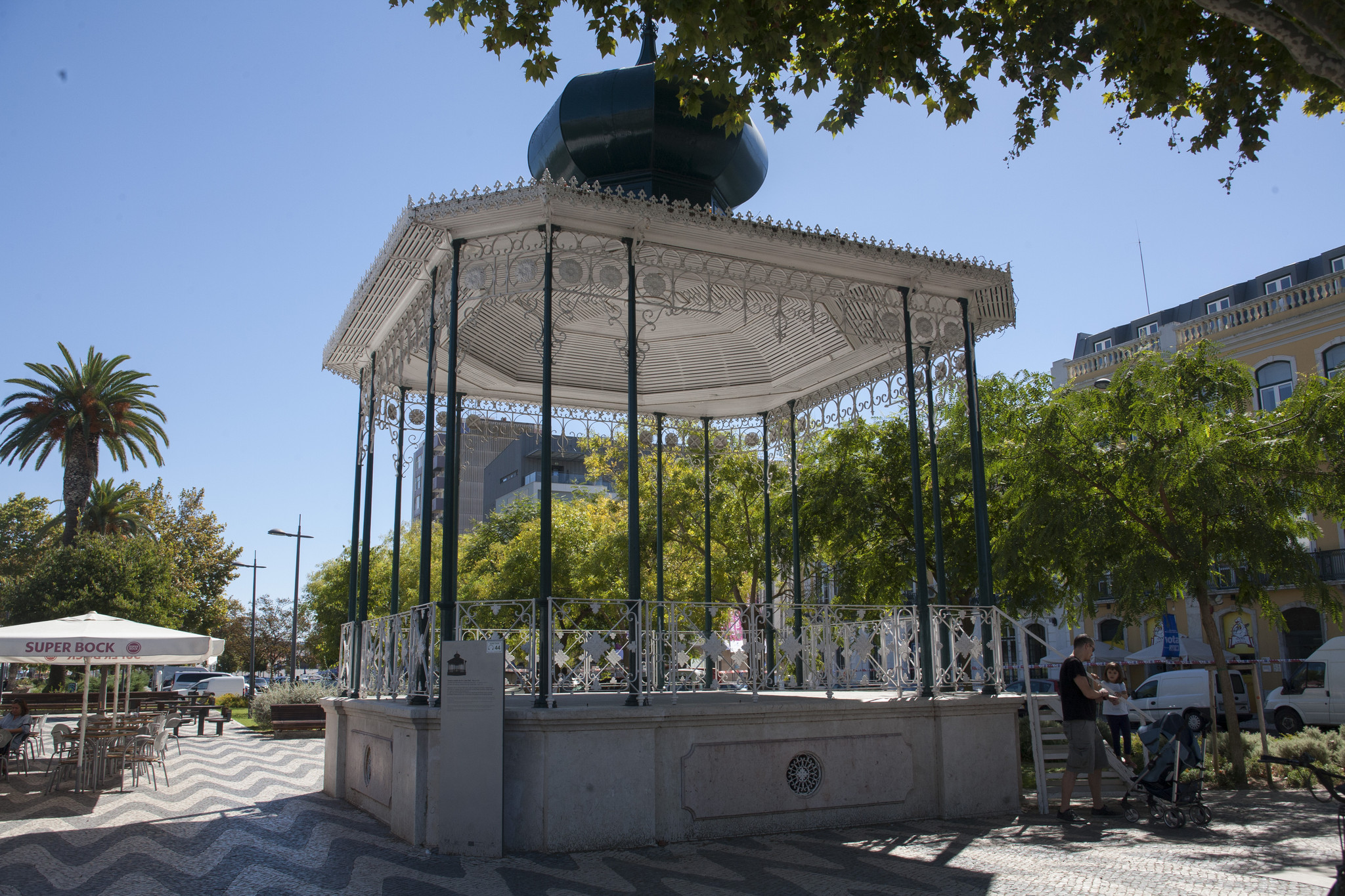Versão portuguesa aqui.
GPS 38.52291641058088, -8.891181837505947
In the "Setubalense" newspaper O Districto, on July 24, 1887, it was reported: “The bandstand was premiered in celebration of a glorious date, the entry into this city of liberal troops, commanded by the valiant Duke of Terceira. It now seems that the band of hunters will play there on Thursdays and in Jardim do Bonfim on Sundays.”

In the heart of the city of Sadina, the stage for the festivities was built on Avenida Luísa Tody, at the behest of President Machado Corrêa. The bandstand emerged with the flourishing of local philharmonic bands and became a center of commercial, social and cultural activities, an imposing stage for the most varied events.
The lacy shapes molded in iron that adorn it are an expression of national popular art, as well as the small round balcony, jus from the pulpit that had been erected.
Nowadays, the bandstand remains restored and with some activity around it: fairs, local activities, celebrations of national dates and commerce. Even so, it is the decrease in popular affluence that Aníbal Fernandes most complains about. Working at the kiosk in front of the bandstand for 12 years, he regrets the emergence of large shopping centers that distract families from their free time. He remembers the philharmonic bands and flood weekends from the bandstand – it was on the avenue that families did their shopping and strolled with the younger ones, who chose the bandstand as one of the recreational spaces for their games. The business is maintained, as well as the bandstand on an avenue that still claims to be alive, not only because of memories and the desire to return to the heart of Setúbal.